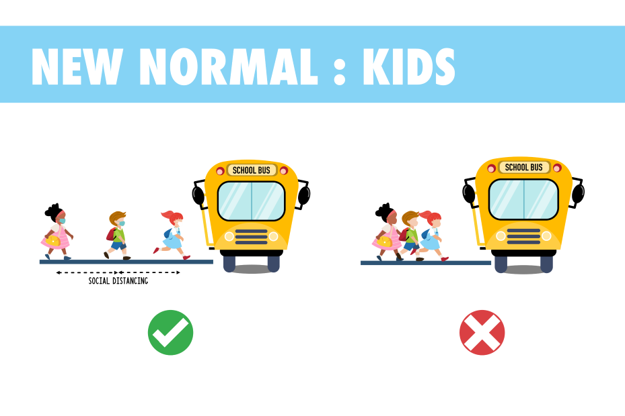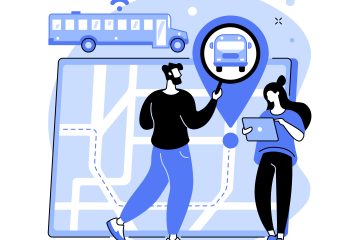
With Transportation Service this is especially important as customer expectations and demands for their children’s safety and security are critical to manage. The recommendation from successful schools after reopening is to have a service supported by use of an App that engages the parents providing:
- Transparent information about route schedules
- Delays to pick-up or drop-off time
- Way to share critical information like elevated temperature or sickness
- Attendance
- Ad hoc requests for students to take busses
By focusing on this, schools will be better able to provide a robust, flexible, and financially viable service which will create confidence in parents allowing their children to use the school bus. Of course, this confidence will have a direct and positive impact on ridership and willingness to pay. This is something that schools have stated after reopening is that families feel safer using the school’s transportation service instead of public transportation.
We recently held a roundtable discussion on Transportation Services and discussed the following areas:
- Communication
- Health and Hygiene
- Planning
- Pickup to School Start / Dismissal to Drop Off
- Documentation
The results of this discussion are below.
Planning operational flexibility
Have the mindset that change is inevitable and will require a readiness to adapt on short notice.
Plan how you will respond to situational changes (absences, school schedule changes, regulations, and policy changes, etc.) which impact the ability to deliver the required service.
Align with your bus company regarding schedule flexibility for both drivers and buses.
Respond to regulations that impact the delivery of service e.g. temperature, ventilation, occupancy, partitions between seats or driver etc. Work with your bus company to find the best solution on how to manage this in the most cost effective and user-friendly way.
Enable means of communication to inform parents about “last-minute” schedule changes and allow for parents to communicate absences which allows for optimize route planning.
Integrate transportation planning with overall school planning and communication.
Planning Financial Viability
Bus occupancy may be impacted by fluctuating attendance and schedules, optimize this through a scheduling and planning tool.
If necessary, to vary routes daily, consider the impact on drivers and families – consider using an App to guide drivers and inform families.
Suspend travel insurance (if possible) when the school is not operating.
Work proactively with bus companies on price and costs – bear in mind the importance of your school’s business on the overall business of the bus company – this may have implications on their ability to return to service or your power of negotiation to make changes
- Determine who will take the costs for bus driver safety as well as any impact to driver unemployment benefits which may result from returning part-time.
- Renegotiate contracts if possible, to allow for flexibility in case of future service breaks or changes that are necessary.
- Explore alternative use of buses/revenue streams if possible, such as transporting other items between homes and school.
Pickup to School Start / Dismissal to Drop Off
Cohorts
- Morning: coordinate students arriving from the buses into cohorts (class or grade or location) to enter the school
- Afternoon: coordinate movement of students from cohorts (class or grade or location) to bus cohorts when they leave the school
Staggered arrival and dismissals
- Plan staging areas to manage staggered arrival before school start and dismissals prior to student’s departure to buses
Monitors
- Use monitors on your buses to ensure drivers can focus on safe bus operations.
- Monitors can:
- Enforce regulations – social distancing, wearing masks or shields, hand washing, etc.
- Monitoring student health
- Conduct screening / temperature checking (must ensure accuracy of the tool and provide training)
- Apply disinfectant to hands especially younger students
Screening and Isolation
- Plan where and when these checks will be done
- At pickup – outside bus will require planning of stops so that traffic is not impacted
- Upon arrival at school – consider implications on moving students from bus to the school.
- Upon departure from school – in class, at staging areas or at bus
- Plan for any impact these procedures have on schedules
- Determine what information is critical to capture and document especially considering privacy
- Ensure Isolation areas are provided
- Bus: Have a plan to isolate students on the bus, should they show symptoms
- School: Provide a location to isolate individual students or even the full bus
Communication
Overall
- Transportation communication needs to be coordinated with the overall school communication. The processes that are communicated for transportation need to be integrated with the school’s processes
- Use videos to show how things are planned to look when the school reopens
- Make it clear what is being planned – entire school needs to have a vision
- Start communicating before reopening (2 months for instance) on a weekly basis
Have an App which is integrated with communication is very useful – otherwise need to use paper forms every day
- Documenting absences in advance is helpful for planning
- Temperature check confirmation of above or below a certain temperature is easier than administration of having forms
- Route changes with information on pick up or drop off times can help ensure that families know what is happening
- Highlighting new procedures
- Delays on the bus for pick-up or drop-off with parents waiting with younger students
Involve Parent Association using a good messaging channel such as WhatsApp / WeChat etc.
Email is an alternative but often not checked regularly so not reliable that the information has been received by everyone
Intranet is useful for documenting information for the community looking for how things work
Ensure that privacy is important and is being followed
Health and Hygiene – for both students and drivers
Temperature screening
- Parents to check the temperature in the morning and provide confirmation that the temperature is below or above a threshold
- Monitors on the bus check temperature of students and are allowed to refuse student entry into the bus – this is only happening if the monitor sees the student clearly ill. (Considerations here include the amount of time to do this at every stop including blocking the road, training the monitors on how to handle taking temperatures and monitors assessing if student is sick)
- Each student will be checked at school by the nurse. This temperature check is the only valid temperature check for sending a student home
- If a student has elevated temperature (done by the nurse) then the student needs to wait in a “isolation area” and be picked up by a parent
Temperature reporting
- Avoid providing detail temperature information (just a yes or no that temperature is above or below a threshold – that will be easier with privacy laws such as GDPR)
- Parents to provide confirmation before entering the bus if the student’s temperature is below or above a threshold
Travel Updates
- Parents to confirm that they have not traveled in restricted zone or country
Mask requirements
- Masks may not be required by the government, but they help reduce the risk or spread. If masks are required, then determine how to enforce this requirement i.e. in the morning – no mask means no bus ride. Offer masks for the return trip which school will provide
- Put siblings together on the bus
Ventilation
- When possible drive with the windows open to reduce the spread (see article on spreading with cough – (https://www.theschoolcollaborative.com/articles.html/articles/impact-of-a-cough-indoor-r3/)
Hygiene
- Clean bus after each route – and if mandated, document the process
Hand Sanitization and processes
- Provide hand sanitizer when entering the bus. Consider having a monitor to apply this to students’ hands, especially younger students
- When departing school, provide hand sanitizer / handwashing stations or require hands to be washed prior to leaving class
- Plan for how the hand sanitizer will be replenished
Illness
- A child is on the bus and starts to show signs of illness you should isolate the child on the bus such as having the last rows on the bus for this. Then must consider if necessary, to isolate entire bus upon arrival at school
- If a child later tests positive, follow government requirements. Consider that you may need to quarantine entire bus, class, etc., until students can be cleared with a negative test.
Regulations and Policies
- Local / state regulations often dictate minimum standards for safety, hygiene, etc. Prepare to meet these standards while aligning to school requirements as well
- Establish school policies and procedures that include screening, social distancing, health, hygiene, and safety
- Enforcement
- Plan for implications to policy enforcement -i.e. denied boarding, “isolation area”, etc.
- Be consistent when enforcing policies
- Quarantine suspected or confirmed cases
- Have parents sign a form acknowledging policies and regulations, as well as any updates
- Alignment
- Policies and procedures must be aligned with school
Documentation
- Keep it simple
- Integrate it into an App otherwise too extensive
- Have a database of response but not with detailed information – such as temperature above or below 37.5 but not specifically the temperature


